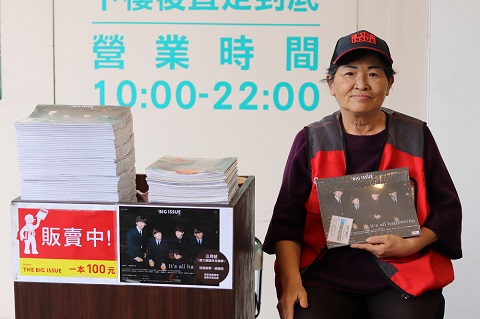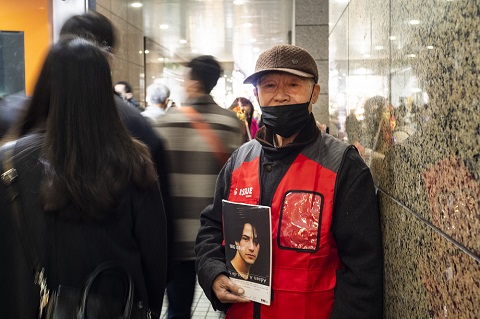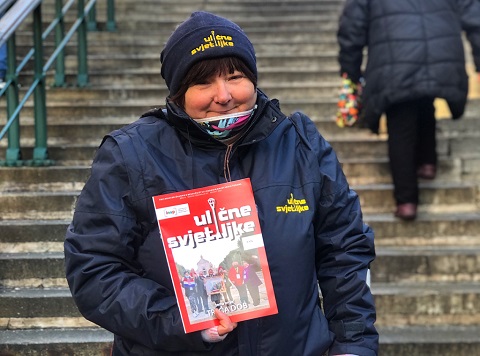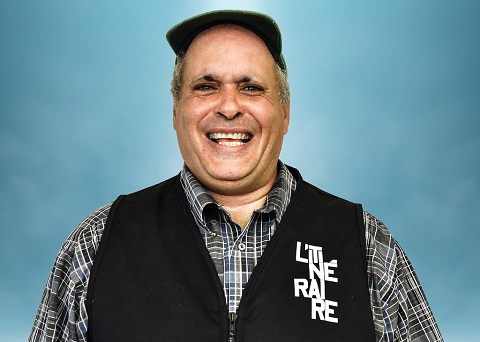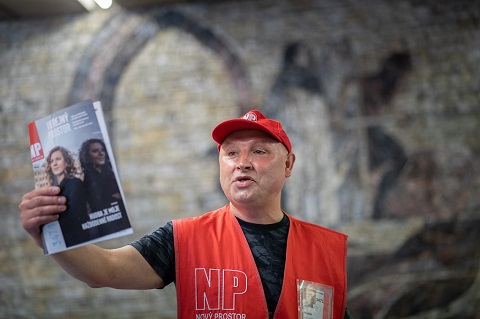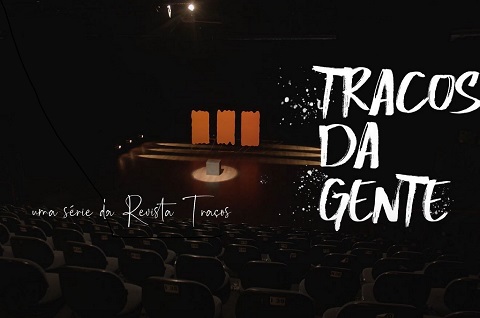Interview by Sayuri Kusama
Susumu Hamada is Osaka born and raised. He has leads walking tours in downtown Osaka and sells The Big Issue Japan on the pedestrian bridge in front of the Umeda (Osaka) Station. “Come chat – I’ll let you know how to have some fun in Osaka,” he says.
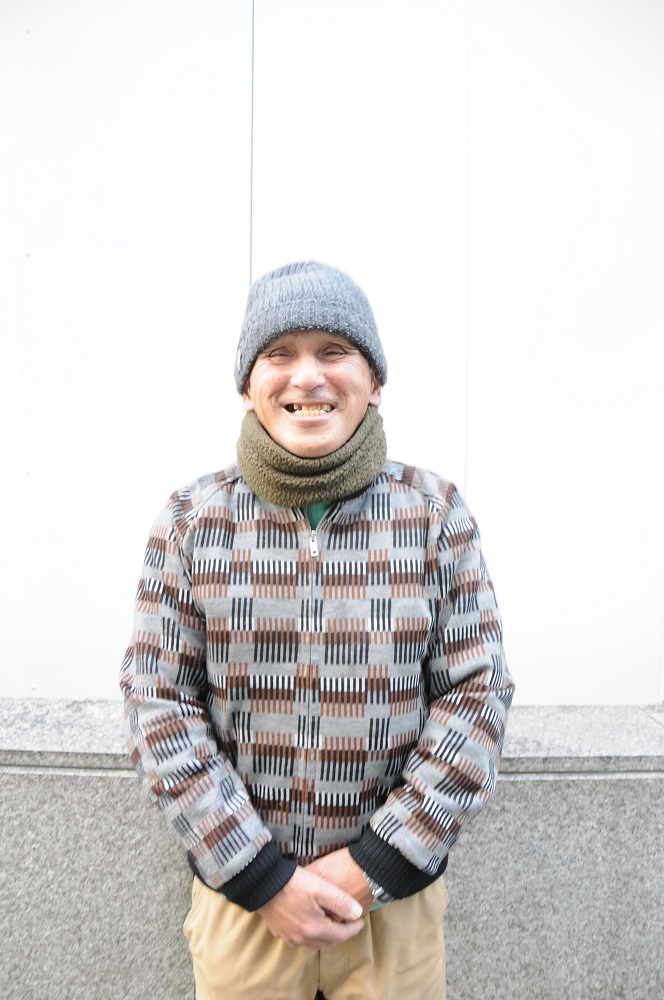
My top tourist tip
Osaka has so many rivers and bridges that it has long been called “Water City” and “Happyaku-yabashi,” meaning 808 bridges. If you’re in the city, try getting tips from people on the street rather than from a guidebook. Osakans are friendly, kind, and will be happy to help you out. I think the essence of Osaka is the warmth of its people.
My favorite spot
You just can’t beat Nakanoshima (20 minutes from Osaka Station on foot). Both Osaka City Central Public Hall and Osaka Prefectural Nakanoshima Library were built around 100 years ago and have grand and old-fashioned architecture. Back then, Osaka had a booming textile industry and was called the “Manchester of the Orient.” Looking at these buildings, you can imagine how the city was thriving. You can tell I’m a real Osakan because I like being reminded of the good old days, which we call the “Big Osaka” era because this city was the largest in Japan, surpassing even Tokyo. Nakanoshima is where Osaka’s merchants got started; it’s like the spiritual birthplace of all Osakans.
Where to eat
We have a saying: Ki-daore (go broke buying fine clothes) in Kyoto, kui-daore (go broke eating and drinking) in Osaka. So visitors here should eat well. I recommend you visit the Umeda Hanshin Hyakka-ten department store basement, because many kinds of food are sold there, including grilled squid and meat buns. There are even standing-room-only food stalls, so it’s great for getting a quick bite. Get a takeout walking a little ways from Osaka Station and eat in the spacious Utsubo Park.
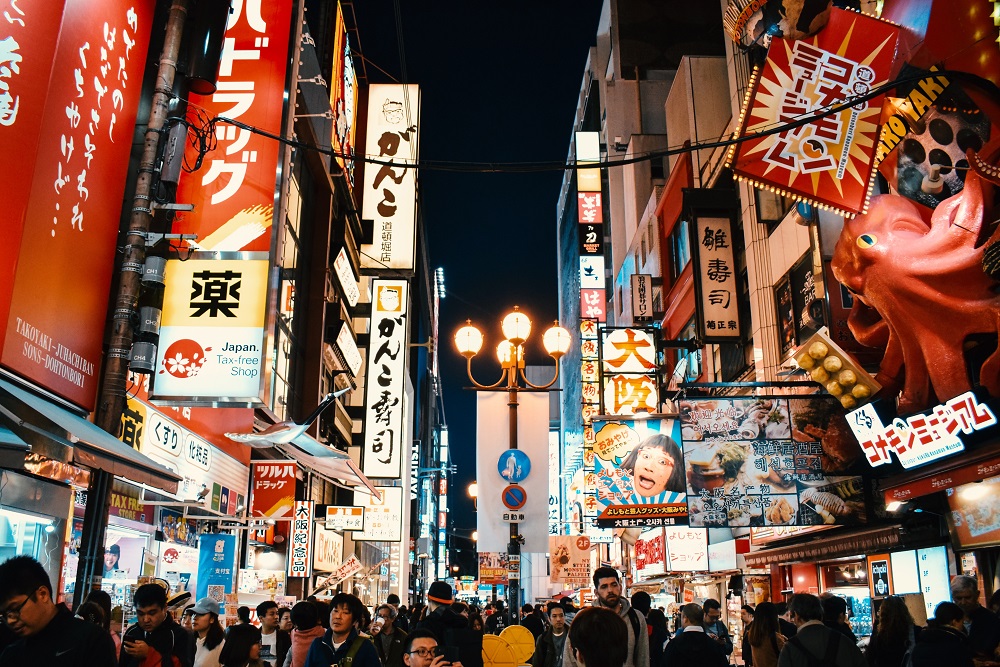
Best-kept secret
I don’t think many people know about the Kagaya Shinden Kaishoato, an Edo-era estate, near Suminoe Park (30 minutes from Osaka Station by train; entry is free). There are almost no visitors, and you can relax there for two or three quiet hours. The estate’s land was reclaimed from the river over 250 years ago, back when there were still samurai in Osaka. You can go inside the old estate and learn how people lived back then through seeing its kitchen and other rooms.
Best time to visit
It’s no surprise, but I think it’s best to come see the spring cherry blossoms or the autumn leaves. The riverbanks near Osaka Castle are lined with cherry trees. Enjoying the blossoms while sitting under the trees that surround the castle keep is simply the best. In fall, I really recommend seeing the Japanese maple leaves in Minoo Park (one hour by train from Osaka station). Try to make it to Minoo Falls, which can be reached by a roughly one-hour hiking trail. And don’t forget to eat the park’s famous dish, maple leaf tempura! You might even see a monkey if you’re lucky.
Translated from Japanese by Annelise Giseburt
Originally published in The Big Issue (UK)
Read more coverage of #VendorWeek 2019 here.





